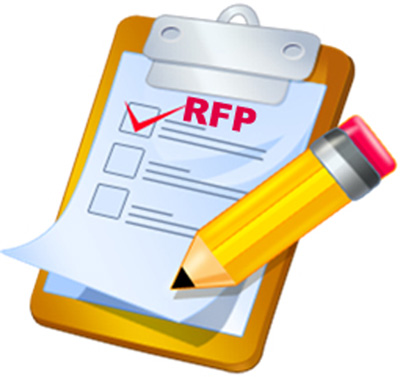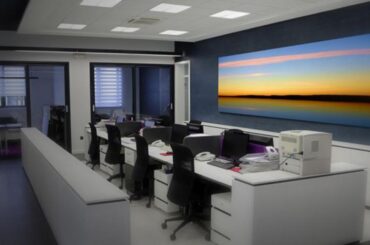Web design and development are key components of a modern organisation’s existence. The corporate website is, at once, a microcosm of the company’s sales literature, public relations profile, employee newsletter and advertising, all easily accessible in one very visible and public place. And it may also be the principal or one of the primary sales vehicles of the company. In short, the website is the kernel of the company’s corporate public persona. Devising the creative, technical and planning strategies for this critical medium and the labyrinthine structure underpinning it, requires a focused, highly complex and multi-skilled professional team.
Engaging The Right Team
 Image Credit:Paul Borchers
Image Credit:Paul Borchers
All corporate costs need to be fully justified. Because of its vital role and the immense value it brings, the right web design and development team effectively renders the fees it charges insignificant. Engaging the right team is one of the most cost effective investments a company ever makes. Engaging the wrong one is likely to be one of the most costly. Unlike any other professional service, web development and design is so complex and multifaceted (and becoming more so by the week) that using RFPs to choose it is not just ill-advised, but it puts the organisations very existence in jeopardy.
The reason is simple. For better of for worse, because of the increasing importance of the web in most companies’ marketing and sales strategies, more corporate tasks are being channelled through an organisation’s website. This can greatly increases efficiency, save money and generally makes good business sense, provided the website does its job. If for any reason it doesn’t, the company could be in serious trouble.
Don’t Take The Risk Of Badly Designed Website
The website is first and foremost the company’s greatest advertisement. That doesn’t mean that it’s always a positive one. Forget the dubious axiom that “no publicity is bad publicity”. A badly designed website can drive away a customer permanently. Secondly, if selling is done online, the whole sales process needs to be efficient, secure and simple for the user. Underpinning everything, must be a managed technical structure that all but eliminates downtime and ensures glitch free operation.

A large number of government bodies and some, usually, big companies justify using RFPs for choosing service providers. By “justify” they mean, the process advances by ticking all the necessary boxes. In the case of government bodies, it has little or nothing to do with good business – they’re generally not in business. What it’s really about for all concerned is circumventing individual responsibility. No one is forced to use intuition or intelligence. The system is entrusted with making the decision. When things go wrong, no one is held to account.
Of course RFPs work in some situation. They are effective, for example, when an organisation is looking for proposals from a variety of companies on some types of product supply. A good example of this would be the provision of all the furniture for a new office building. It’s easy to compare desks or filing cabinets between one supplier and the other. Less obvious factors like delivery reliability, after sales service etc can easily be checked by references and with a few simple phone calls to some of the potential supplier’s customers. It’s pretty easy to “tick those kinds of boxes”. But how can a RFP process show how creative a web design team will be when handling an organisation’s unique challenges, or how it will respond to new unforeseen ones? Or how it might mix experience and clever intuition with a fundamental understanding of ever-evolving areas like SEO techniques in designing web sites? How can using an RFP process enable a client appreciate that the design team’s “perceptive finger” on the pivotal pulse of a constantly evolving web environment will give that client a vital edge over competitors?
Here are just a few of the important factors a client needs to look at carefully before picking a Web designer/developer team.
1)How long is the team/business in operation?
2)What are the training/academic qualifications of the main people on the team?
3)How long are the key people working with this team/business?
4)What clients has the team worked for and is still working for?
(Check references from those clients)
5)Which websites and website structures has the team created / worked on?
6)At face to face meetings, has the prospective design team probed the client about the client’s business?
7)Has the design team made insightful novel suggestions that made good business sense to the client
After meeting their key people, is the client’s gut feeling positive about the design team in term of the following five criteria:
a.Business acumen
b.Visual creativity
c.Technical skill
d.Technical creativity
e.Reputation with other clients
This list covers very important factors, but is far from exhaustive. Yet few of the above questions could satisfactorily be answered via the RFP route.
In creative areas like web design or, indeed, advertising, the pitching team is a multi-skilled creative consultant and professional strategy partner. In the case of web design, technical skill and creativity are coupled with visual creativity and all are entwined with competent marketing insight. Abilities in these areas can’t be assessed and then ticked off a multi-choice questionnaire that the prospective client’s purchasing department has drawn up to help simplify the task by seeming to automate the choice.
The Web strategist needs to be intricately involved on an on-going basis with the client company. It’s an evolving organic relationship and, by being continually nurtured, adds increasing value over time. No other type of professional relationship can deliver value to both sides. Proof, or even strong evidence, that a team is likely to be in a position to provide all this, certainly can’t be compacted into a report and presentation, no matter how slick.
Many bureaucratic organisations like to use RFPs processes. A bureaucracy usually equates value with price. An RFP system often clearly shows the price. What it doesn’t clearly show is what the customer gets for the price. Bureaucracies fail to understand that, with creative solutions, where intuition, skill and professional judgement are paramount, you generally get what you pay for. An RFP may be an acceptable way to select a supplier of new office furniture. Using the same system to choose a professional web design and development team is fundamentally flawed and likely to prove extremely costly.




